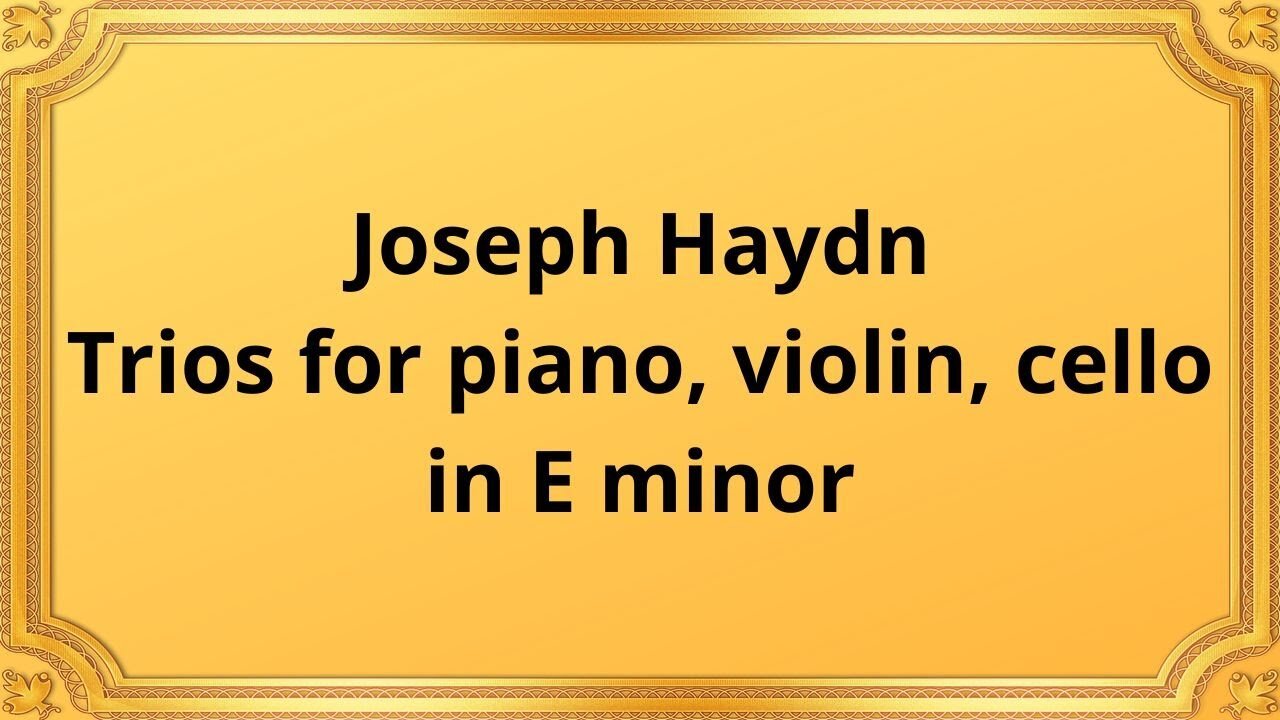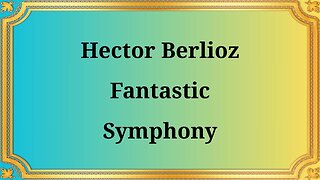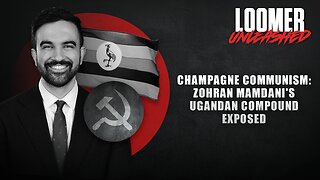Premium Only Content

Joseph Haydn Trios for piano, violin, cello in E minor
#JosephHaydn #Trios #ClassicalMusic #Piano #Violin #Cello #EMinor #ChamberMusic #ClassicalComposers #MusicHistory #ClassicalEra
Jean Fournier, violin - Antonio Janigro, cello - Paul Badura-Skoda, piano
The realm of classical music is adorned with timeless compositions that have stood the test of time. Among these remarkable pieces is Joseph Haydn's Trios for piano, violin, and cello in E minor.
Joseph Haydn, an Austrian composer of the Classical era, was a prolific figure in the development of chamber music. His Trios for piano, violin, and cello in E minor were written during the late 18th century, a time when the Classical style was flourishing. Haydn's innovative approach to composition and his deep understanding of musical structure were evident in this trio, which showcases his mastery of the genre.
The Trios for piano, violin, and cello in E minor exhibit a remarkable balance and interplay between the three instruments. The composition begins with a melancholic and introspective theme, evoking a sense of longing and introspection. The piano takes on a prominent role, providing a solid foundation and engaging in dialogues with the violin and cello, creating a rich tapestry of sound.
Haydn's meticulous attention to detail is evident in the intricate melodic lines and the delicate harmonies that permeate the piece. The use of dynamics adds depth and emotion, with moments of gentle pianissimo contrasting with powerful crescendos. The interweaving melodies between the three instruments create a sense of unity and cohesion, while also allowing each instrument to shine individually.
Haydn's Trios for piano, violin, and cello in E minor have left an indelible mark on the world of classical music. The composition exemplifies the essence of chamber music, showcasing the intimate and collaborative nature of the genre. Its enduring popularity is a testament to its timeless beauty and the masterful craftsmanship of its composer.
The influence of Haydn's trios can be seen in the work of future composers, who drew inspiration from his innovative use of musical elements and his ability to create captivating musical dialogues. The E minor trio serves as a testament to Haydn's enduring legacy as a pioneer of classical music and a master of his craft.
Conclusion:
Joseph Haydn's Trios for piano, violin, and cello in E minor stands as a testament to the composer's genius and his significant contributions to the world of classical music. Through its intricate musical elements, emotional depth, and enduring impact, this composition continues to captivate audiences and serve as a testament to the timeless beauty of chamber music. It serves as a reminder of the power of music to transcend time and connect us to the profound emotions and experiences of the past.
You have the opportunity to support the channel:
https://destream.net/live/RadSiarAl/donate
https://www.buymeacoffee.com/6355radsiaral
-
 48:22
48:22
Classical music_Music Inspiration
1 month agoHector Berlioz Fantastic Symphony
801 -
 6:18:53
6:18:53
RECON-RAT Guns & Gaming
1 day ago $0.02 earnedRECON-RAT - Battlefield Marathon! - BF1 -BFV - BF2042
5551 -
 1:54:08
1:54:08
The Michelle Moore Show
20 hours ago'Medical Preparedness...Your Gateway to Freedom, Foods Parasites Hate, and more' Guest, Dr. Shawn Rowland, Founder of Jase Medical: The Michelle Moore Show (July 29, 2025)
15.7K8 -
 15:05
15:05
The Pascal Show
12 hours ago $1.56 earnedHOLY SH*T! The Missing Minute From Epstein’s Jail Video Has Been FOUND
9.52K6 -
 LIVE
LIVE
Lofi Girl
2 years agoSynthwave Radio 🌌 - beats to chill/game to
201 watching -
 2:14:32
2:14:32
Inverted World Live
10 hours agoHarvard Astronomer Says Hostile Alien Spaceship Heading Toward Earth | Ep. 82
225K58 -
 2:29:34
2:29:34
Brandon Gentile
4 days agoHow To Retire 10 Years Early with Just 0.1 Bitcoin
12.5K6 -
 3:19:34
3:19:34
Laura Loomer
9 hours agoEP135: Champagne Communism: Zohran Mamdani's Ugandan Compound EXPOSED
53.6K11 -
 28:39
28:39
The Why Files
3 days agoCryptids Vol. 4 | Bunyips, Yowie and Australian Nightmare Fuel
61.2K38 -
 1:07:06
1:07:06
Mike Rowe
18 days agoThe Fight For America's Heartland | Salena Zito #442 | The Way I Heard It
44.5K50